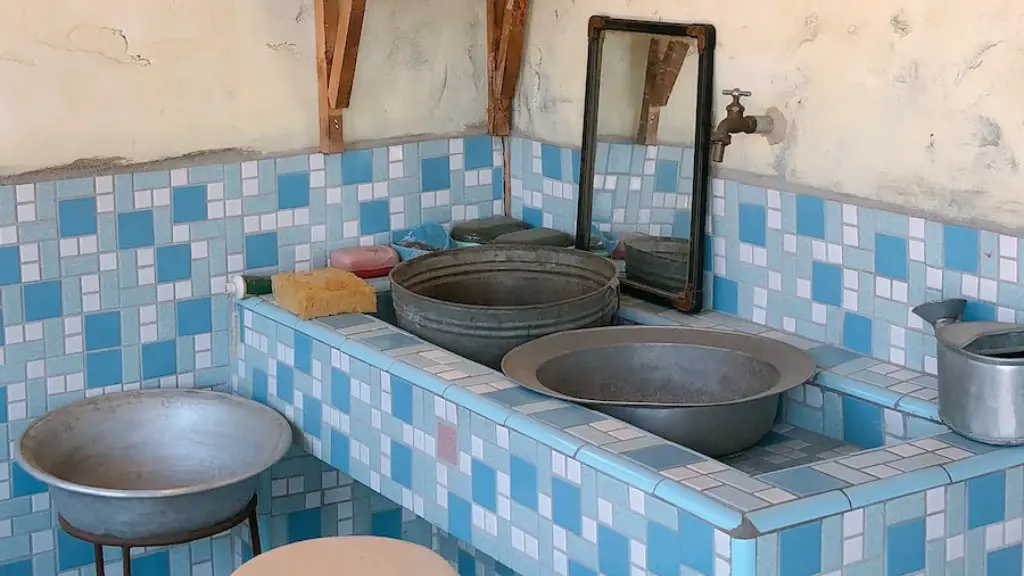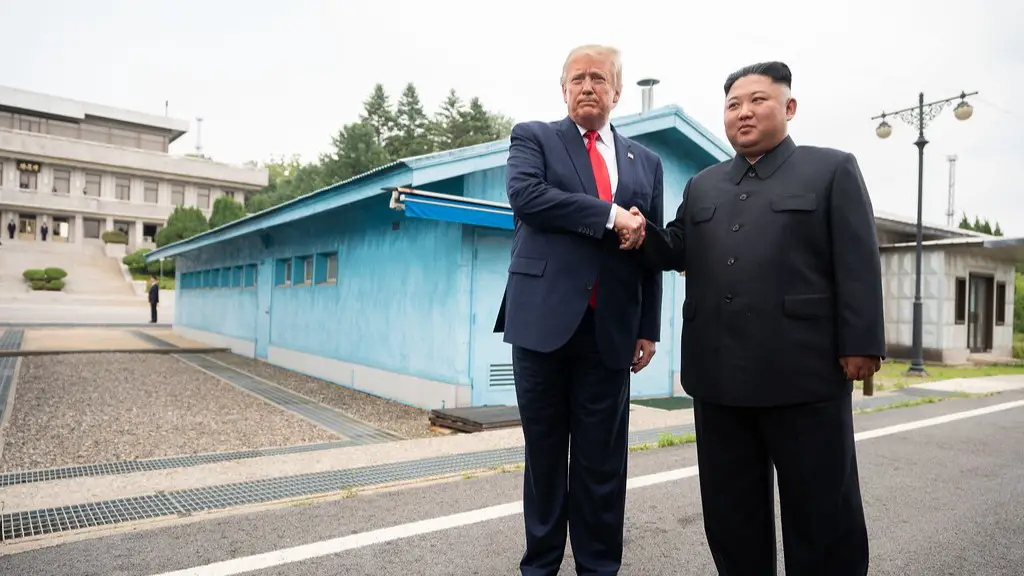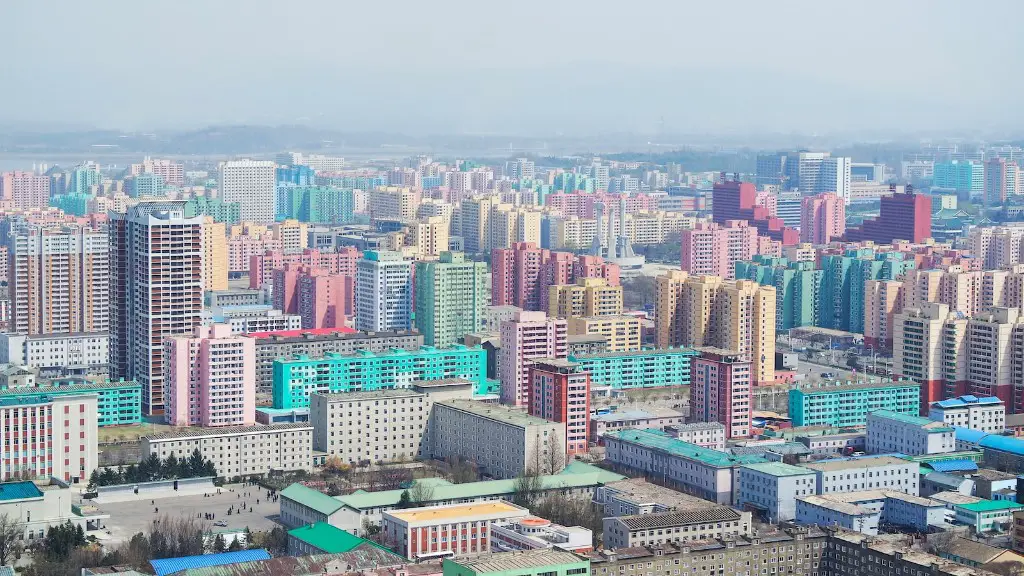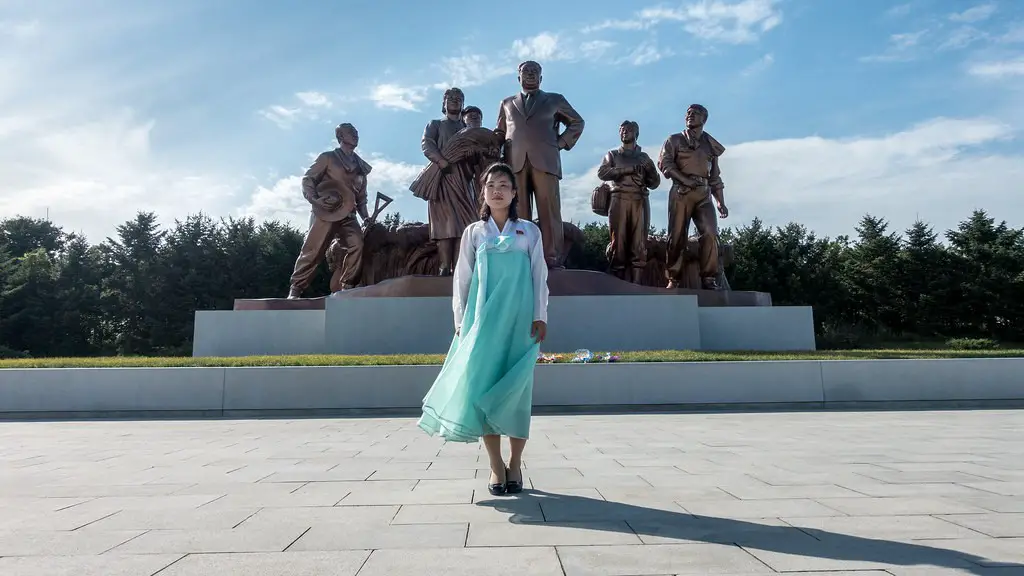History of Divided Korea
Since the end of World War II in 1945, the Korean peninsula has been divided into two countries – North Korea and South Korea. A demilitarized zone (DMZ) of 2.5 miles (4 km) separates the two countries. During the Korean War (1950-1953), the two sides failed to reach an agreement on reunification and the armistice left the peninsula divided.
Relations between the two nations have been deteriorating since the mid-1950s. A series of talks have been held since then by both governments, with the most recent happening in 2018, yet to no avail. North Korea has long been viewed as one of the last totalitarian regimes in the world under the rule of the Kim dynasty.
In addition to the difficult political differences, the economic divide between the two countries is also a major obstacle. South Korea’s economy is one of the most developed in the world, with a GDP of over $2 trillion and average annual per capita income of closer to $30,000. The North’s economy is estimated to be less than 1 percent of its southern neighbor’s and the average annual per capita income of North Koreans is believed to be less than a tenth of that of South Koreans.
International and Regional Perspectives
The international community and powers such as China and the United States are divided on the issue of Korean reunification. China has traditionally been a supporter of North Korea and has been keen on preventing a unified Korea that could align itself with the US. Meanwhile, the US has supported the Korean War armistice and has no plans to help reunify the two countries.
According to the Institute for Korean Unification Studies at Seoul National University, both South Koreans and North Koreans have become more negative towards unification, especially among the younger generations. South Koreans have become more aware of the costs and challenges associated with reunification, such as the economic burden and the political, social, and cultural differences between the two countries.
The actual process of reunification could be a long and arduous one. South Korean President Moon Jae-in has emphasized the importance of gradual progress and has proposed a step-by-step approach aimed at slowly building mutual trust. He has also urged North Korea to take “courageous and bold” steps towards dialogue and compromise.
Reunification Challenges and Risks
The two Koreas face a number of challenges and risks when it comes to reunifying. There are numerous political, economic, cultural, and social differences between the two countries that need to be addressed if reunification is to be successful. North Korea’s economy is heavily distorted and weak while South Korean’s economic system is advanced and integrated into the world markets.
Most importantly, the reunification process will require the government in Seoul to retain tight control over the reunification process, manage public opinion, and develop effective policies to tackle the economic, social, and political challenges of reunification.
It is likely that the process of reunification will take many years, involving a gradual opening and integration of economies and gradual moves towards normalized relations between the two countries. This process could require economic aid from both sides and input from the international community.
The reunification could also lead to increased tensions between North and South, and could be the trigger for further conflict between the two countries, particularly if not managed sensitively.
Reunification Incentives
There are some potential political incentives for reunification, such as increased security and a greater degree of stability in the region. North Korea has a large armed forces, and combined with South Korea’s military, it could lead to a more secure environment in the region. The international community also supports the idea of reunion, as it would contribute to peace and stability in the region.
Moreover, a unified Korea would be a major economic power. Its total population would exceed 80 million, putting it among similar major economies such as the UK and France. A unified Korea could also benefit from the integration of its labor markets, removal of trade barriers, and a unified economic system, which could attract foreign capital and technology.
On the other hand, a unified Korea could lead to a decline in South Korea’s current economic well-being, as the North’s current economic conditions would weigh heavily on the already advanced South Korean economy. South Korea could also lose its current political and cultural identity in the process.
Recent Developments
In the past year, a thaw in relations has been seen between North and South Korea. In 2018, North Korean leader Kim Jong Un and South Korean President Moon Jae-in held several summits, where they declared a commitment to peace and the goal of denuclearize the Korean Peninsula. The two sides have also discussed measures to improve inter-Korean relations, with plans for a joint economic project and a gradual opening of the DMZ.
These recent developments have sparked renewed hope among Koreans on both sides of the border, with many seeing this as a potential starting point for reunification. However, there has been little progress since the summits and the future of the North-South relationship remains in question.
Political and Military Considerations
In addition to the economic, social, and cultural differences between North and South, the reunification process could face significant political and military challenges. North Korea’s nuclear weapons programme is the main obstacle to reunification and the international community is unlikely to support reunification as long as it remains a risk. Furthermore, the military capabilities of the two sides have to be taken into consideration.
South Korea has a population of around 50 million and a defense budget of roughly $46 billion. North Korea, on the other hand, has an estimated population of 25 million and a defense budget of only about $4 billion. South Korea’s military power is significantly greater than North Korea’s and this is likely to be a major challenge when it comes to reunification.
Both sides are also likely to have difficulty in balancing the interests of their citizens when it comes to reunification. North Koreans will want to protect their political and economic system while South Koreans may want to retain their political and economic systems.
Future of Unification
It is unlikely that North and South Korea will reunify in the near future. Although there have been some positive developments in relations between the two countries, the obstacles to reunification remain significant and the two sides still view each other with mistrust. The military, economic, political, and social gaps between North and South Korea remain huge, and the process of reunification could require economic aid from both sides, input from the international community, and a long and difficult process of gradual integration.
There are, however, some incentives for both sides to pursue reunification and it is possible that, with enough goodwill and determination, the two Koreas could eventually take the first steps towards reunification and the prospect of a better future for both countries.





